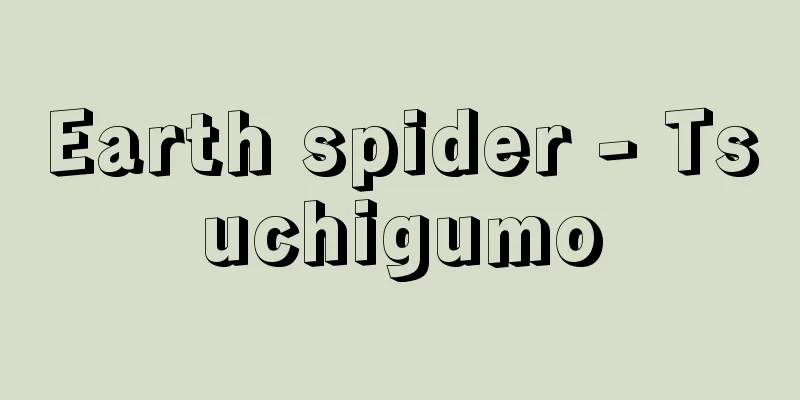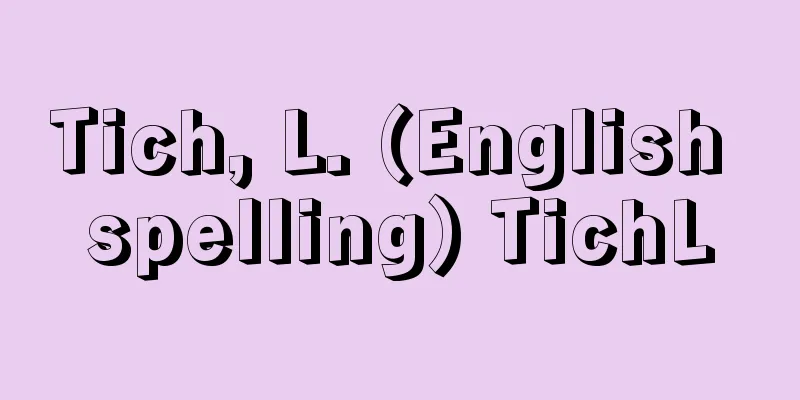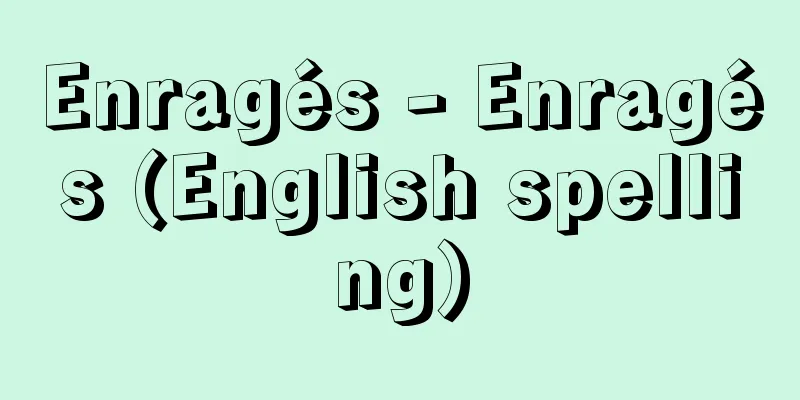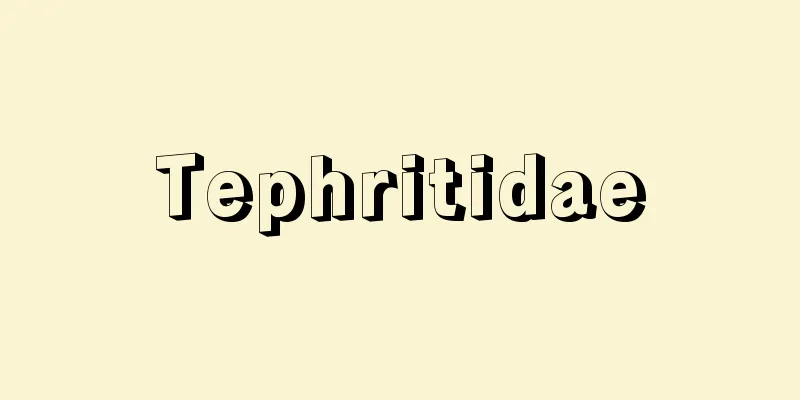Earth spider - Tsuchigumo

|
[1] [Noun] ① Another name for "jigumo (earth spider)". [Tashikihen (1631)] ② In ancient times, this was a derogatory name given to the indigenous people who did not submit to the authority of the central government. They lived in caves and were violent. They appear in myths and legends. ※Kojiki (712) states, "When he arrived at the great chamber of Oshisaka, Yasotake , a man of the Ina school, waited in the chamber for him . " [2][1] (The Komparu and Hōshō schools write it as "Tsuchigumo"). Noh play. The fifth piece. Various schools. Author unknown. A monk visits the bedside of the sick Minamoto no Yorimitsu, who throws a thousand threads at him, tormenting him. When Yorimitsu cuts them with his sword, the monk disappears. Surprised by Yorimitsu's voice, the warrior rushes over with his attendants and follows the trail of blood to the old mound, where they defeat the earth spider spirit that emerges from behind a rock. [2] (Tsuchigumo) Nagauta. Osatsumamono. Composed by Kineya Kangoro III. First performed in 1862 at Edo Shiba Suehiro Goten. An adaptation of the tokiwazu "The Spider's Thread," it consists of three parts, upper, middle and lower, of which only the upper part (commonly known as "kiri") is performed today. [3] (Tsuchigumo) Kabuki Shosakugoto. Nagauta. Written by Kawatake Mokuami. Composed by Kineya Shojiro III. Choreographed by Hanayagi Jusuke I. First performed in 1881 at the Shintomiza Theater in Tokyo. Matsubametsumono based on (1). One of the Ten Kinds of New and Old Drama. Source: The Selected Edition of the Japanese Language Dictionary About the Selected Edition of the Japanese Language Dictionary Information |
|
[1] 〘名〙① 「じぐも(地蜘蛛)」の異名。〔多識編(1631)〕② 古代、中央政府の威徳に服しない土着の人々を、蔑視して呼んだ称。穴居して、性凶暴であったという。神話、伝説に見える。※古事記(712)中「忍坂の大室に到りたまひし時、尾生る土雲〈訓みて具毛(グモ)と云ふ〉八十建、其の室に在りて待ち伊那流(いなる)」[2][一] (金春・宝生流は「土蜘」と書く) 謡曲。五番目物。各流。作者不詳。病床に伏す源頼光の枕元に僧形の者が訪れ、千筋の糸を投げて苦しめるので頼光が刀で切りつけるとたちまち姿を消す。頼光の声に驚いてかけつけた武者が、従者たちと血の流れた跡をたどって古塚を見つけ、岩陰から出てきたさきの土蜘蛛の精を退治する。[二] (土蜘) 長唄。大薩摩物。三世杵屋勘五郎作曲。文久二年(一八六二)江戸芝末広御殿で初演。常磐津「蜘蛛の糸」の改作で、上中下三段より成り、上段(通称「切」)だけが現在でも演奏される。[三] (土蜘) 歌舞伎所作事。長唄。河竹黙阿彌作。三世杵屋正次郎作曲。初代花柳寿輔振付。明治一四年(一八八一)東京新富座初演。(一)に取材した松羽目物。新古演劇十種の一つ。
出典 精選版 日本国語大辞典精選版 日本国語大辞典について 情報 |
<<: The story of the earth spider
>>: Earth spider - Earth spider
Recommend
Begging for forgiveness
…From this time on, each tribe began to adopt a h...
Legend
…The calendar for the Lateran Basilica, which is ...
Chirizuka Haikaishu - Chirizuka Haikaishu
A collection of haiku poems. Written by Saito Toku...
Medici, P.II de' (English spelling)
… [Hideo Katayama]. … *Some of the terminology th...
Foreign title yearbook - Gedai Nenkan
A complete catalogue of Joruri works. Compiled by ...
Jukendo - Jukendo
In this sport, two opposing players wear protectiv...
Japanese pipistrelle - Japanese pipistrelle
It is an animal of the order Chiroptera, family V...
Insect-resistant wood
This refers to wood that has been treated with an ...
Drobeta
…The capital of Mehedinci County. Its official na...
Solenodon cubanus (English spelling) Solenodon cubanus
...A primitive insectivore resembling a large rat...
zero-point energy
…the motion that remains in the lowest energy sta...
Torbernite (torbernite)
Also called torbanite. A type of uranium mica, a m...
School Camp - Gakkou Kampu
…School facilities established at the foot of mou...
Selenarctos thibetanus japonicus (English name) Selenarctos thibetanusjaponicus
…Bear [Yoshiharu Imaizumi]. . . *Some of the term...
Butung Island (English name) Pulau Butung
An island in eastern Indonesia, off the southeast ...









